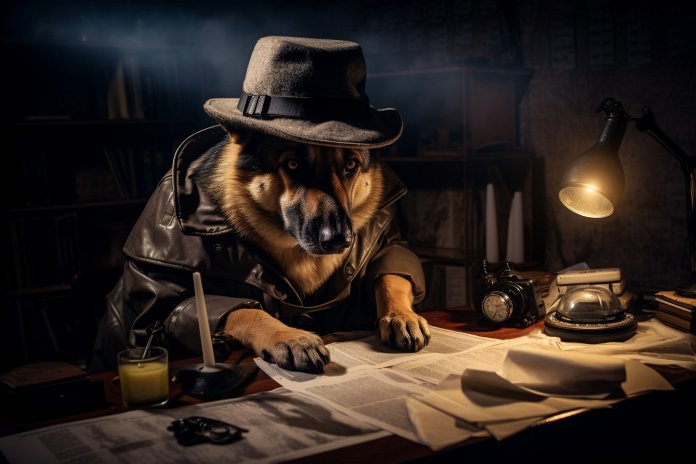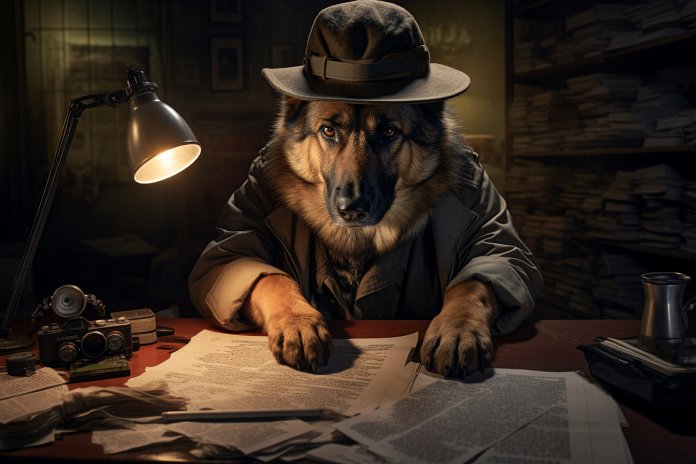
The term “gun dog” originally referred to a dog that helped hunters find and retrieve game. Now, in the 21st century, gun dogs play a crucial role in tracking firearms discarded by criminals on the run. These highly trained K-9s use their sense of smell to locate guns, which can provide vital evidence to bring offenders to justice.
How Dogs Track Gunpowder Scent
Detection dogs are trained to sniff out various items, including cash, drugs, bombs, and firearms. When it comes to tracking guns, these dogs are specifically trained to detect the scent of gunpowder. Even if the gun has not been fired, these trained dogs can still pick up the scent. They can also detect gun oil, a substance used in the manufacturing of firearms.
When a detector dog is alerted by their handler, they head to the crime scene and are instructed to find the scent. These dogs love their work, as evident by their wagging tails and focused sniffing. With their 200-300 million scent receptors, they take in every odor, bobbing and turning their heads from side to side.
Once they find an area close to the scent, the dog will pace around, allowing the scent to take hold. If it’s a positive find, the dog will sit in a passive mode, indicating they have found something. Aggressive signaling, such as digging, scratching, or pawing at a specific area, is another way dogs alert their handlers to the possible presence of a gun. Bomb detector dogs are trained to use passive alerts due to the potential risk of an explosion.
Examples of Gun-Sniffing Dogs in Action
Given the tragic shootings in schools, there has been an increasing interest in using dogs that can detect guns to help protect students. For example, at Calhoun County schools in Alabama, there are two highly trained dogs – QT, a black Labrador, and Hoss, a German Spotted Pointer – on patrol. QT is known for jumping up at school lockers to ensure there are no concealed guns. These dogs have an incredible sense of smell compared to humans, allowing them to detect even the faintest scent of a firearm.
Body Language and Other Signs
When a dog detects the scent of gunpowder, they exhibit certain behaviors such as alertness, digging, jumping up, scratching, sniffing, and head bobbing. Additionally, a dog may sit near the gun, exhibit another trained behavior, or display excited behavior to indicate a positive find.
The History and Science Behind Dogs Detecting Gunpowder
Dogs have been assisting humans since they evolved and became domesticated. Early humans recognized the value of these animals in hunting and began selectively breeding them, leading to the diverse range of dog breeds we have today. Bloodhounds were among the first dogs used by the British police to track down criminals due to their exceptional sense of smell.
Belgian Malinois and German Shepherds became popular police dogs in the late 19th century and early 20th century, respectively. These breeds excel at tracking people and have been invaluable in law enforcement efforts. In the 1970s, the use of dogs in law enforcement expanded in the United States, with their roles including detecting drugs, apprehending fugitives, and searching for explosives.
Dogs have a superior sense of smell compared to humans, allowing them to track scents in 3D. Their ability to detect scents comes from their wolf ancestors, who relied on their sense of smell for survival. Dogs’ noses take in scent data from both nostrils separately, creating a detailed image of the scent. This sense of smell has made dogs invaluable in detecting firearms, such as in Cumberland County, Pennsylvania, where dogs are deployed in schools to search for guns.
Training Dogs to Detect Gunpowder
Gun dogs are trained to detect the scent of gunpowder, gun oil, and gun residue. They are specifically trained to focus on the scent of firearms, ignoring other scents that may be present at a crime scene. German Shepherds, Belgian Malinois, Labrador Retrievers, and Golden Retrievers are commonly used breeds for detection work, as they have a strong hunting instinct and are sociable and trainable.
Training methods for detection dogs typically involve positive reinforcement, using rewards such as tennis balls or toys. These methods build trust between the dog and handler, resulting in a more reliable and effective working relationship. In the past, more forceful training methods were used, such as with Doberman Pinschers trained to be aggressive, but there has been a shift towards positive reinforcement techniques in recent decades.
Conclusion
Gun dogs play a crucial role in law enforcement by using their exceptional sense of smell to detect firearms. They are trained to track the scent of gunpowder and gun oil, helping police find vital evidence and apprehend criminals. These highly trained dogs have a long history of assisting humans, from hunting to tracking down criminals. Their ability to detect scents in 3D and their superior sense of smell make them invaluable assets in detecting firearms and ensuring public safety.
“The extraordinary scenting abilities of gun dogs make them invaluable in tracking firearms and keeping communities safe.”

Tips & Things to Know
1️⃣ Gun dogs, originally used to help hunters find and retrieve game, have now become invaluable to police forces for tracking firearms, not just the scent of gunpowder but also gun oil. They can track these scents even if the gun has not been recently discharged, making them crucial in finding evidence related to crimes involving firearms.
2️⃣ Dogs have several ways of alerting their handlers when they have detected the scent of a firearm, such as sitting near the suspected area, digging, scratching, or exhibiting any other trained behavior. However, bomb detector dogs are trained to use passive alerts to avoid setting off the explosive.
3️⃣ Training dogs to detect gunpowder involves positive reinforcement methods, often using toys or food as rewards. The preferred breeds for this kind of work include German Shepherds, Belgian Malinois, Labrador Retrievers, and Golden Retrievers. These dogs are chosen for their hunting instincts and sociability. The training involves presenting them with containers where one holds the smell of gunpowder, and if the dog identifies the correct container, they are rewarded.
Frequently Asked Questions, Answered ✅
1. How do gun dogs detect firearms and gunpowder?
– Gun dogs are trained to detect the scent of gunpowder and gun oil. They can pick up on the scent of firearms even if they have not been discharged.
2. What are some signs that a dog has detected gunpowder?
– Signs that a dog has detected gunpowder include alertness, digging, jumping up, scratching, sniffing, and head bobbing.
3. How have dogs been used to detect firearms throughout history?
– Dogs have been used by humans since early man befriended wolves. Bloodhounds were used in 1888 by the British to track criminals, and Belgian Malinois dogs were trained by the Belgian police in the late 1800s. In the 1970s, the USA began using dogs for law enforcement purposes.
4. What makes dogs better at detecting scents than humans?
– Dogs have a highly developed sense of smell and can track scents in 3D. Their noses can pick up scents separately with each nostril, allowing them to locate hidden objects more effectively than humans.
5. How are gun dogs trained to detect gunpowder?
– Gun dogs are trained using positive reinforcement techniques, often using a tennis ball or rolled up white towel as a reward. They are presented with containers that hold the scent of gunpowder and rewarded when they correctly identify the scent. Male dogs are often preferred for this type of training.